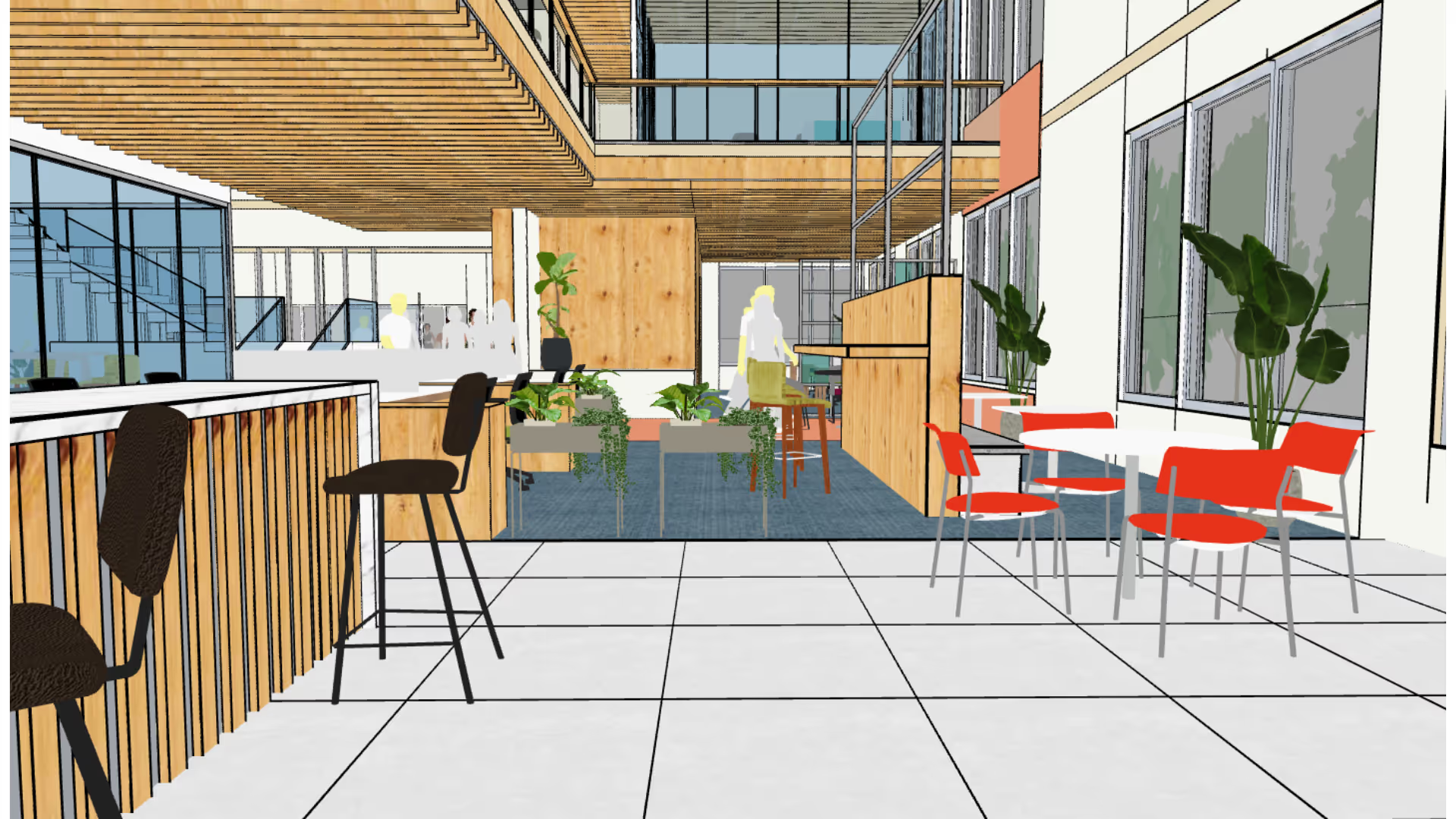Here's What We Learned Designing A Modern Office For Snaptrude In The Post-Covid Era.

What’s in this Blog?
- Project Introduction
- Brief
- Goals
- Design Process
- What We Learned

Project Introduction
The idea was to design a new office facility for Snaptrude, an AEC start-up Company with 50 employees. We understood that our design must be parametric and our floor plan must be able to evolve over time. We must create a permanent structure that can house change and evolve into the ideas of our future.

Brief
To make a brief, we decided to ask our colleagues a few questions, to better understand requirements and what their day looked like. We wanted to understand everyone’s day to day schedule. This helped us design a workspace that is more united and collaborative. These were the questions we came up with.
- Does your work need you to be more in the “zone” and alone or do you need to collaborate?
- How much space do you need? (Different teams have different requirements. The Engineering team, for example, requires more table space than marketing).
- How many meetings do you have in a week and in a day? What are the duration of those meetings? How many people attend each meeting?
- What kind of aesthetic would help you be more productive? (We showed mood boards, to discuss what would increase productivity, and what would help them get into a break).
For a mid-density office, which is a mix of open workstations and private cabins, the area required for an employee is 150 – 250 square feet.
To get the area of the new facility employee, multiply headcount by the number of square feet per employee.
i.e. 50 employees x 250 square feet = 12500 square feet (1200 m2 space).
The next step was estimating the size of various office elements. Based on our discussions, we came up with the following calculations. Feel free to use them for your design!
- Medium Private office: 150 – 250 sft.
- Small Private office: 100 – 150 sft.
- Open workstations: 80 – 110 sf per employee.
- Group work areas: 80 – 110 sf per employee.
- Conference Room: 50 sft + 25 sft per person.
- Reception: 100 – 200 sf per person waiting.
- Corridors: 20% - 30% of the usable area.
- File / Server room: 200 sft.
Note : It is helpful to add 20%-30% to the total square footage calculated to accommodate future growth.

Goals
We identified different workspace settings that support our colleague's activities. Now, it was time to figure out how design can help streamline communication between various teams.
Furthermore, in the Post-Covid Era, we wanted to help design for teams that are working hybrid and remote models.
We wanted to streamline communication between remote and in-office workers, to increase collaboration.
These insights helped us design the office space, with settings that support diverse activities. These organised distributed settings, connected to each other.

Design Process & Outcome
Here’s what we came up with!
On the ground floor, visitors enter a warm double-height reception space with a skylight made of acrylic panels, in cyan, magenta and yellow. The Sunlight filters through the screens colouring the space below. This was a perfect setting for a coffee bar, with seating for visitors and employees to use as a break-out space.
- Flexible workspaces making it easy for them to have impromptu conversations,
- Formal meeting spaces where they can present their product to customers,
- Small coves for informal conversation customer representatives can talk with their clients
- Quiet zones where they can review projects, brainstorm or focus on an individual task.
- A significant feature is the glasshouse discussion room at the centre of the space.
- The top floor houses workspaces and individual cabins for CEOs. The large unified terrace space is accessible from the first floor and used to enhance human engagement with nature. Large windows placed along the northern and southern edges open to beautiful views of the surrounding greens.
- We arranged workstations to get largest daylight. A significant feature is the glasshouse meeting room at the centre of the space.

What We Learned.
Office design is more than configurations and planning.
Over the course of the last century, office design has evolved from cubicles, to open floor plans. Today, we see another paradigm shift as new ways of working have come into the world, office design must evolve.
It’s time to challenge the status-quo and the traditional “workstation”. We discovered, many of our colleagues love the idea of floating desks. Working with different views depending on what kind of work they’re doing and the time of day.
The One-Desk-Does-All Workstation will fade away as technology advances. Mobile workstations and laptops will become lighter, faster machines that are easy to carry about anywhere you want.
We didn’t want to create a space that our colleagues never want to leave.
We wanted to create a space where our colleagues can’t wait to come back to.




